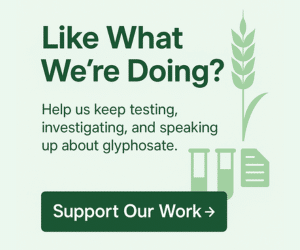New Zealand has one of the highest rates of non-Hodgkin lymphoma in the world.
That’s not speculation—it’s what the data says. And yet, for something so serious, it’s barely part of the public conversation.
There’s no media coverage. No national inquiry. No urgency from public health officials. It’s as if this sharp rise in cancer has quietly slipped under the radar.
And maybe that’s the real concern.
Because when something this big isn’t being talked about, we should be asking—what else are we missing?
The Numbers Tell a Story—But Only Part of It
Between 1981 and 2010, rates of non-Hodgkin lymphoma in New Zealand rose sharply—67% for men and 74% for women. That data, from a peer-reviewed epidemiological study, was alarming enough on its own.
But what’s more concerning is that not much has been done since to dig deeper.
Today, more than 1,100 New Zealanders are diagnosed with lymphoma each year, and over 85% of those cases are non-Hodgkin lymphoma. That figure has remained stubbornly high, placing us among the top countries in the world for incidence rates.
Yet despite this, there’s still no clear explanation—and no national effort to find one.
Rural Exposure: The Blind Spot in Our Health Data
You’d think someone would’ve checked by now. Are lymphoma rates higher in rural areas than in urban ones? Is there any pattern by occupation—say, among forestry workers or sheep and beef farmers?
But there’s no data. Not because it doesn’t exist—but because no one is looking.
No public database tracks cancer by location or herbicide exposure. There’s no requirement to investigate when clusters appear. No interest, it seems, in drawing lines between chemicals and cancer—at least not here.
Meanwhile, courtrooms overseas are doing just that.
A Convenient Kind of Safety
We’re told glyphosate is “safe when used as directed”—but as we explored in MPI’s Missing Data, that safety claim isn’t backed by current local testing.
Are contractors out there every day suited up with full protective gear? Are councils keeping proper records of how much they’ve sprayed, and where? Are farmers informed of any long-term risks?
And perhaps more importantly—are any of those answers even being tracked?
Glyphosate isn’t always used in tightly controlled lab conditions. It’s sprayed by people, on properties, in wind and weather, across paddocks and fence lines. That’s real life. But our safety assessments don’t reflect that reality.
When regulators say there’s “no evidence of harm,” we need to ask: is that because there’s no harm, or because no one’s looking closely enough to see it?
Courts Are Drawing Connections. Why Aren’t We?
While New Zealand maintains a business-as-usual approach to glyphosate, courtrooms in the U.S. are moving in a very different direction.
In May 2025, a Missouri appeals court upheld a $611 million verdict against Monsanto, the makers of Roundup®. The plaintiffs all developed non-Hodgkin lymphoma—and jurors agreed it wasn’t a coincidence. They ruled that Monsanto failed to warn about the risks.
This is just one of thousands of lawsuits Bayer (who now owns Monsanto) is facing. Some have already resulted in massive payouts. Others are still waiting to be heard.
It makes you wonder—how long can we ignore the legal trend before we start to ask whether the same risks exist here?
The Pattern We Don’t Want to Repeat
We’ve seen this before. A product is widely used, widely praised—even while concerns quietly build in the background. Then, years later, we look back with a mix of regret and disbelief.
Tobacco. Asbestos. Lead paint. 2,4,5-T.
Each one was considered safe—until it wasn’t. The science didn’t suddenly change. Our willingness to look did.
Is glyphosate heading down the same path?
It’s too early to say for sure. But it’s not too early to start asking the question.
What We Actually Need
If we’re serious about protecting public health, then here’s where we need to start:
- Map the data. Are lymphoma rates higher in rural areas? Let’s find out.
- Track exposure. Who’s using glyphosate, how often, and where?
- Update the testing. When was the last time glyphosate residue levels in our food and water were publicly reported?
- Fund independent research. Not industry-backed, not selectively reviewed. Independent.
Because saying “there’s no link” when we haven’t even looked isn’t science. It’s wishful thinking.
It’s Not Just About the Chemicals—It’s About the Questions (or Lack of Them)
Cancer isn’t always caused by a single event. It’s often the result of small, repeated exposures—day after day, year after year. The kind we barely notice.
That’s what makes it so easy to overlook. And so important to investigate.
New Zealand’s rising lymphoma rates are no longer something we can ignore. The numbers are telling us something. But numbers can’t ask questions.
That part’s up to us.
Resources & References
We’re not here to tell you what to think—just to encourage you to look a little closer.
The research below doesn’t give us all the answers, but it does highlight just how many questions remain. If non-Hodgkin lymphoma is on the rise, and glyphosate is everywhere, the least we can do is explore the possibility that the two are connected.
Because asking better questions starts with understanding what’s already out there—and what’s still missing.
Leukaemia & Blood Cancer New Zealand – Non-Hodgkin Lymphoma Overview
Provides comprehensive information on NHL, including prevalence, types, symptoms, and current understanding of causes.
Non-Hodgkin lymphoma leukaemia.org.nz
Journal of Cancer Epidemiology (2014) – “Epidemic of Non-Hodgkin Lymphoma in New Zealand Remains Unexplained”
Analyzes the significant increase in NHL incidence in New Zealand from 1981 to 2010, highlighting the need for further investigation into the causative factors.
pubmed.ncbi.nlm.nih.gov
Figure.NZ – New Cases of Non-Hodgkin Lymphoma in New Zealand
Offers detailed statistical data on NHL cases in New Zealand, broken down by year and gender.
figure.nz
Global Cancer Observatory – New Zealand Fact Sheet
Presents age-standardized incidence and mortality rates for various cancers, including NHL, in New Zealand.
gco.iarc.who.int
Cancer Epidemiology (2024) – “Blood Cancer Incidence, Mortality and Survival for Māori in New Zealand”
Examines disparities in blood cancer outcomes between Māori and European populations, emphasizing the need for targeted research.
pubmed.ncbi.nlm.nih.gov
There’s no shortage of New Zealand data on lymphoma rates—or global research on glyphosate. What’s missing is the bridge between the two.
We’ve got the numbers. What we don’t have is the curiosity, the connection, or the commitment to investigate what they might mean together.
And without that, the real risk isn’t just exposure—it’s indifference.
Image Source & Attribution
We’re grateful to the talented photographers and designers whose work enhances our content. The feature image on this page is by armmypicca. You can find more of their work here: https://www.123rf.com/profile_armmypicca.




